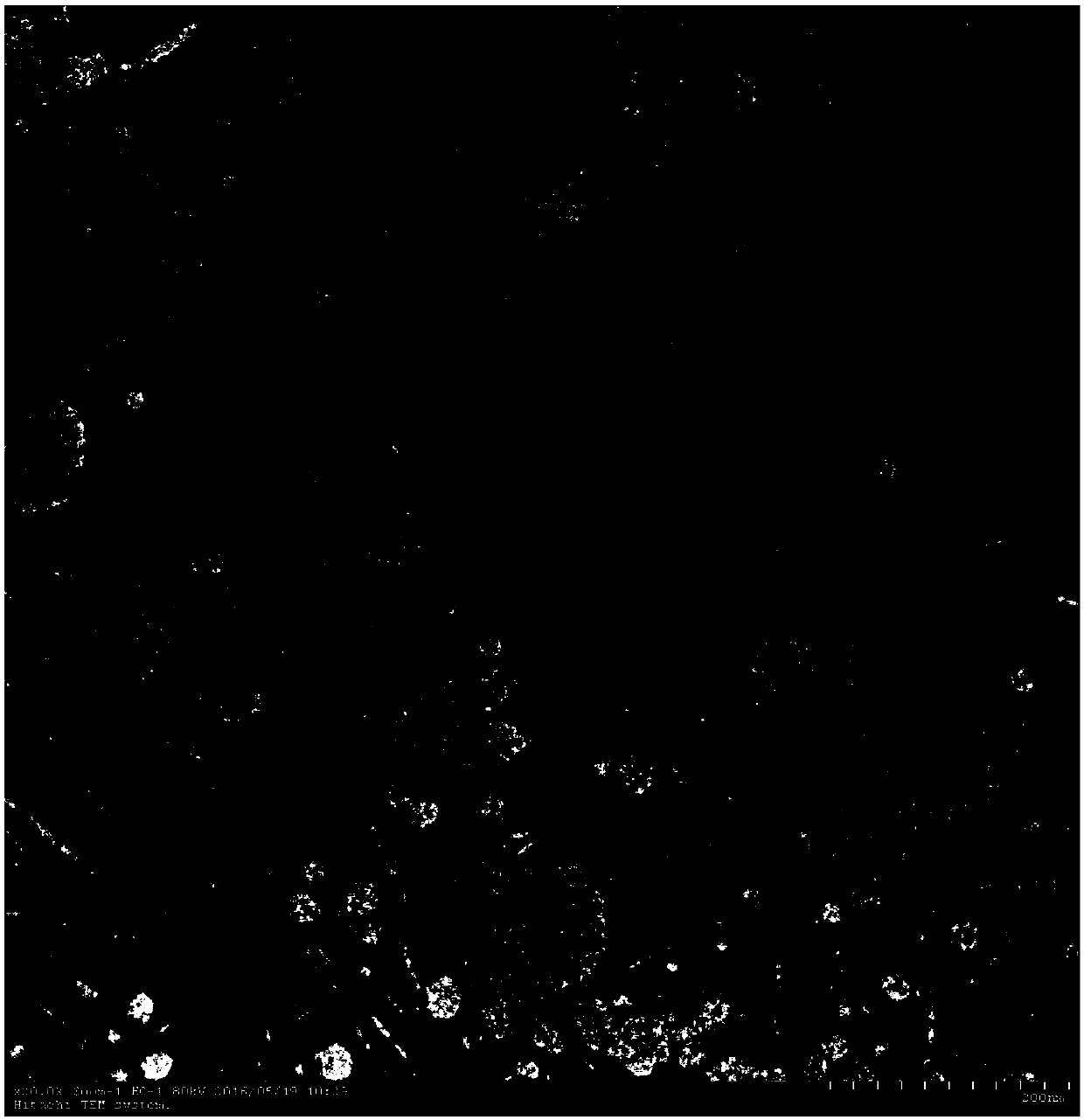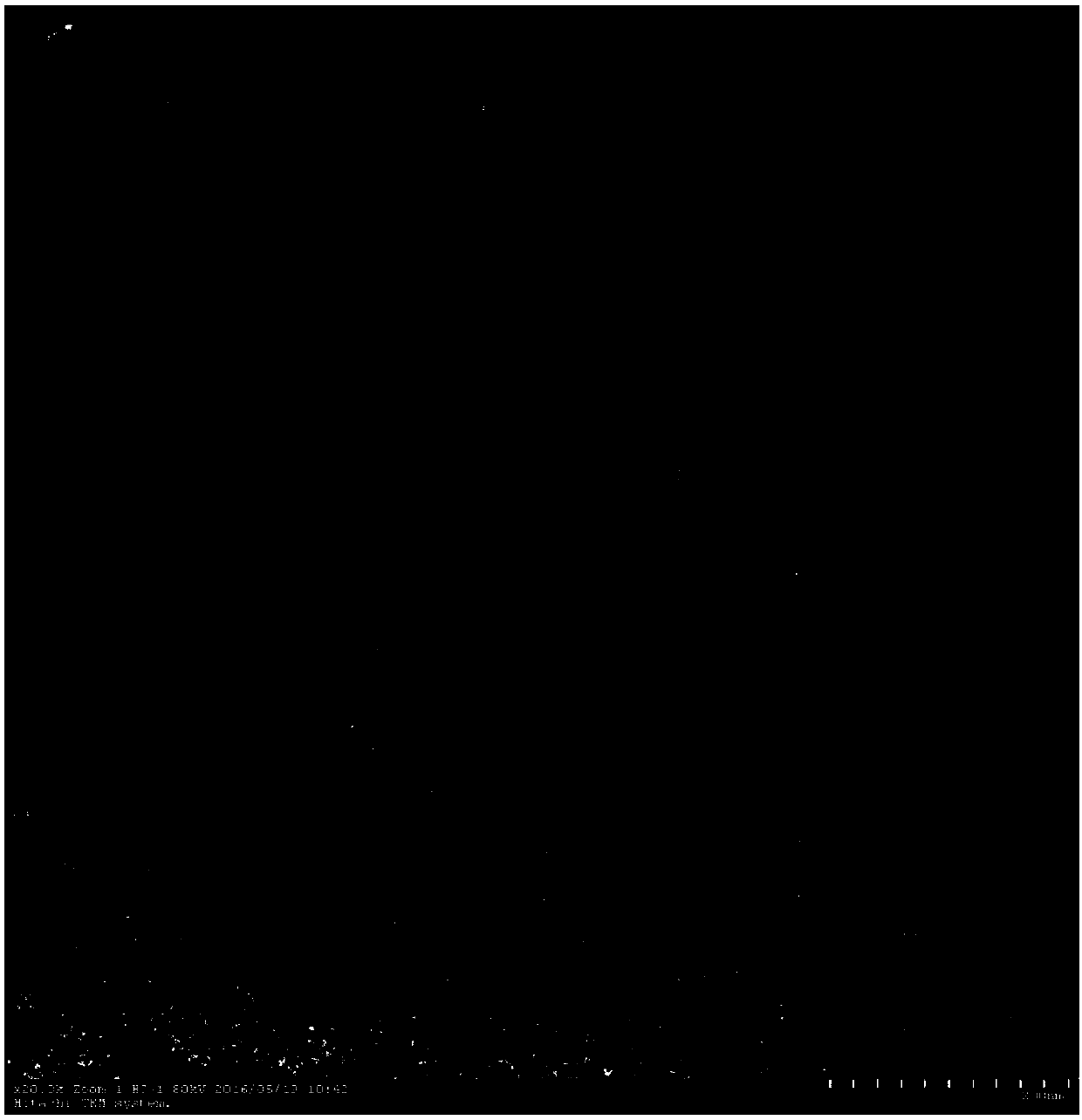A two-stage high-pressure homogeneous method for preparing micro-nano cellulose
A micro-nano cellulose, high-pressure homogenization technology, applied in the post-processing of cellulose pulp, fiber raw material processing, pulp property modification and other directions, can solve the problems of easily blocked product size, high pressure, complex process, etc. Effects of homogenization, avoidance of consumption and contamination, simple preparation process
- Summary
- Abstract
- Description
- Claims
- Application Information
AI Technical Summary
Problems solved by technology
Method used
Image
Examples
Embodiment 1
[0041] (1) 50g wood pulp is mixed with 750g mass concentration of 15% dilute sulfuric acid solution to obtain a cellulose suspension, which is centrifugally washed with distilled water after standing for 4h;
[0042] (2) Add 1.5g maleic anhydride to the cellulose processed in step (1), carry out high-pressure homogenization at 8°C, and the pressure is 60MPa; put it into a freeze dryer, and freeze-dry it at -10°C to obtain micro Nanocellulose crystals;
[0043] (3) After the obtained micro-nano cellulose crystals were pretreated for 2 hours at 120° C. and 0.1 MPa, they were taken out, stirred evenly, and placed in an ultrasonic cell pulverizer for ultrasonic treatment for 15 minutes;
[0044] (4) The micro-nano cellulose processed in step (3) is subjected to high-pressure homogenization at a low temperature of 8°C, and the pressure is 80MPa; after homogenization, it is placed in a freeze dryer, and freeze-dried at -10°C to obtain micronanocellulose Nanocellulose.
[0045] The...
Embodiment 2
[0047] (1) 50g waste paper pulp is mixed with 1000g mass concentration of 22% dilute sulfuric acid solution to obtain a cellulose suspension, which is centrifuged and washed with distilled water after standing for 3 hours;
[0048] (2) Add 2.0g maleic anhydride to the cellulose processed in step (1), carry out high-pressure homogenization at 12°C, and the pressure is 65MPa; put it into a freeze dryer, and freeze-dry it at -25°C to obtain micro Nanocellulose crystals;
[0049] (3) After the obtained micro-nano cellulose crystals were pretreated for 2 hours at 121° C. and 0.2 MPa, they were taken out, stirred evenly, and put into an ultrasonic cell pulverizer for ultrasonic treatment for 18 minutes;
[0050] (4) The micro-nano cellulose processed in step (3) is subjected to high-pressure homogenization at a low temperature of 15° C., and the pressure is 100 MPa; after the homogenization treatment, it is placed in a freeze dryer and freeze-dried at -40° C. to obtain micro-nano ce...
Embodiment 3
[0053](1) 40g cotton pulp is mixed with 1000g mass concentration of 35% dilute hydrochloric acid solution to obtain a cellulose suspension, which is centrifugally washed with distilled water after standing for 2.5h;
[0054] (2) Add 2.0g maleic anhydride to the cellulose processed in step (1), carry out high-pressure homogenization at 15°C, and the pressure is 80MPa; put it into a freeze dryer, and freeze-dry it at -40°C to obtain micro Nanocellulose crystals;
[0055] (3) After the obtained micro-nanocellulose crystals were pretreated for swelling at 123°C and 0.3 MPa for 3 hours, they were taken out, stirred evenly, and placed in an ultrasonic cell pulverizer for ultrasonic treatment for 20 minutes;
[0056] (4) The micro-nano cellulose processed in step (3) is subjected to high-pressure homogenization at a low temperature of 12° C., and the pressure is 85 MPa; after the homogenization treatment, it is placed in a freeze dryer and freeze-dried at -20° C. to obtain micro-nano...
PUM
| Property | Measurement | Unit |
|---|---|---|
| diameter | aaaaa | aaaaa |
| length | aaaaa | aaaaa |
Abstract
Description
Claims
Application Information
 Login to View More
Login to View More - R&D
- Intellectual Property
- Life Sciences
- Materials
- Tech Scout
- Unparalleled Data Quality
- Higher Quality Content
- 60% Fewer Hallucinations
Browse by: Latest US Patents, China's latest patents, Technical Efficacy Thesaurus, Application Domain, Technology Topic, Popular Technical Reports.
© 2025 PatSnap. All rights reserved.Legal|Privacy policy|Modern Slavery Act Transparency Statement|Sitemap|About US| Contact US: help@patsnap.com



